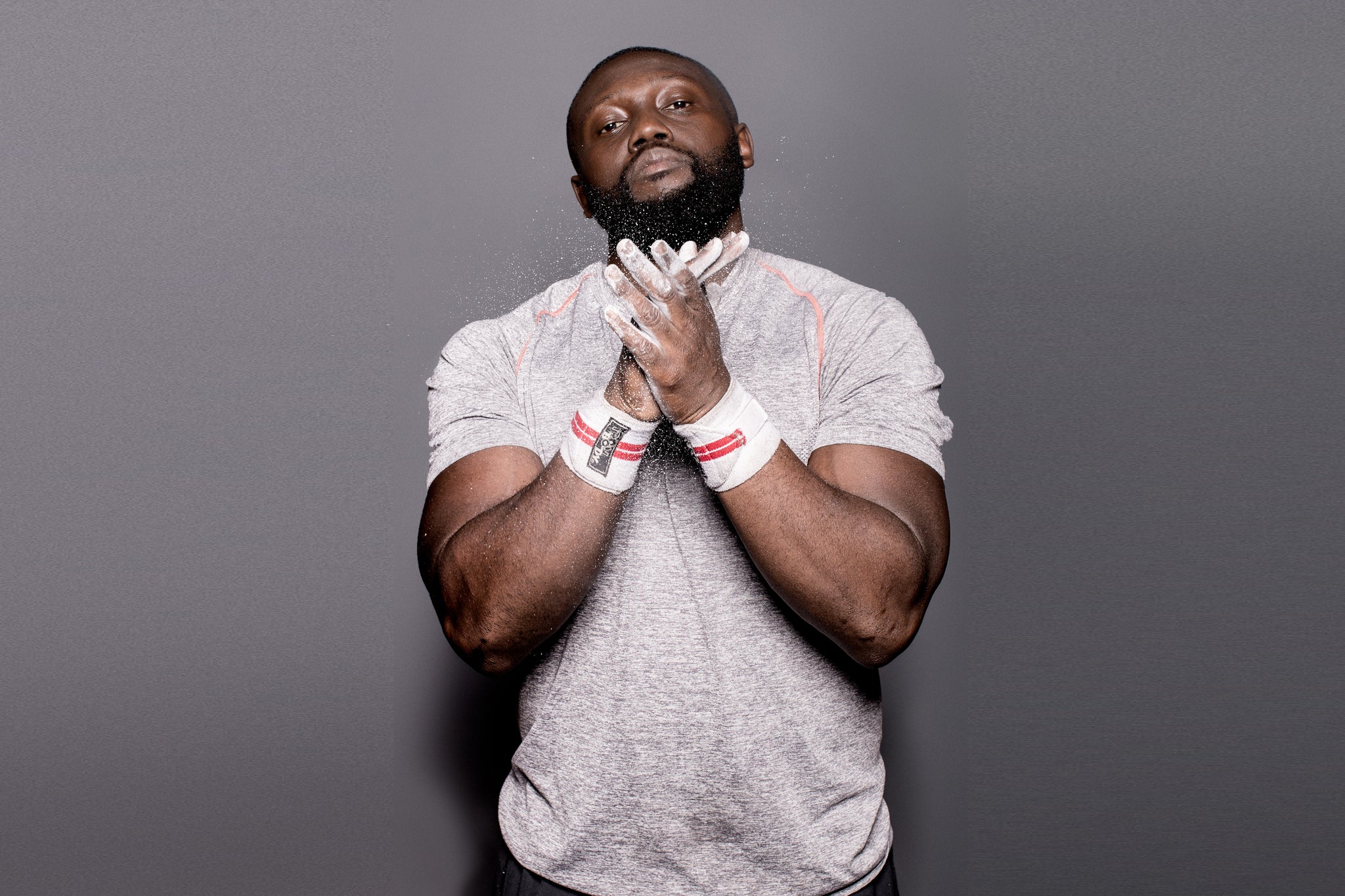Your Cart is Empty
FREE DOMESTIC SHIPPING ON ALL ORDERS OVER $75

ALPHAs,
Whether you are in the weight room or the boardroom, there are few things more uncomfortable and embarrassing than getting your hand crushed during an introduction. Immediately, you become the subordinate and you are left distracted by what the other person may have thought about your pathetic handshake. Although grip strength is possibly one of the most translatable strengths to everyday life, many routine gym goers disguise their weakness with wrist straps or by limiting their workouts to machines or other non-functional exercises. Exercises like this exude little to no stress on the forearm and smaller stabilizing muscles, which will ultimately cripple your grip strength over time.
This has to stop.
Not only is grip strength translatable, but people with dominating grip strength and well-defined forearms look cool! We all notice those gym monkeys with veins like tributaries that expand with blood each time their hand contracts. Developed forearms must be respected - they are a sign of hard work and dedication.
We are all aware of the countless benefits that regular physical activity has on our weight, mood, energy levels and overall health. However, recent studies referenced by the Harvard Medical School have shown that grip strength has positive benefits and can be an indicator of an individual’s overall health. One study looked at 140,000 adults from 17 countries had their grip strength measured by a device called a dynamometer over a four-year period.
The study found that “each 11-pound decrease in grip strength over the course of the study was linked to a 16% higher risk of dying from any cause, a 17% higher risk of dying from heart disease, a 9% higher risk of stroke, and a 7% higher risk of heart attack.” Not only did grip strength prove to be a strong indicator of cardio vascular health, it was also “a better predictor of death or cardiovascular disease than blood pressure.”
During my early years of undergraduate school, I became obsessed with grip strength. Late one night some friends and I stumbled across a YouTube video of a fella named Scott McElroy. This average looking man rolled, not one, but three Teflon coated frying pans together. I was shocked to see Scott, standing in jeans and a grey tank top, demonstrate such superhuman grip strength. I immediately researched him and found that he had a grip strength challenge he called the Iron Claw Challenge. Successful participants were awarded an Iron Claw Master Practitioners Token – his version of a ‘man-card.’
My friends and I spent the next few months attempting to roll frying pans, tear decks of cards, bend horseshoes and rip apples in half. The site no longer exists, but you can still look Scott up on YouTube and watch him go at it. Although I never ended up getting the Iron Claw Master Practitioners Token, grip strength continues to remain a key component of my workout regimen.
Developing elite grip strength is hard work but if you routinely dedicate time to developing your grip, you will see drastic improvements in the gym and in everyday life. If any of your goals include lifting heavier, decreasing the chance of injury, creating more muscle endurance, developing forearm muscularity, improving dexterity, ripping apples in half or - not giving pathetic handshakes - then try following these four recommendations and see if they help you as well:
1. Lose the straps.
No one is fooled or impressed when someone straps up to rep out barbell shrugs. Try moving away from any lifting aids that you currently use to compensate for a lack of strength. Drop down and lift weight that you can hold until your grip strength increases. Wear your newly formed callouses as a badge of honor. Not only will you hold more power in your hands, but it will also stimulate muscle growth over the rest of your body.
2. Train your grip regularly.
Check out IronMind’s Captains of Crush grippers - they are the truly the gold standard of hand grippers and they have various resistance levels available to accommodate everyone. I routinely train with these grippers and, similar to the Iron Claw Challenge, Captains of Crush also has a certification available if you think you have what it takes.
3. Stretch often.
When I first got into grip training, I went hard. Too hard, to the point where my forearms had gotten so tight that in their resting state my fingers curled up into my hands like I was experiencing rigor mortis. On top of that, I dealt with constant elbow pain when lifting. Honestly, I hate stretching and I would rather lift longer instead of taking the time to stretch, but don’t neglect stretching after a workout. Stretching will decrease your chance of injury, improve your range of motion and help you recover faster.
4. Grip it and rip it.
When you anticipate lifting up a heavy object, you naturally apply a stronger grip. Throughout all of your sets, it is important to actively focus on applying that same strong grip strength no matter the weight you are lifting. Squeeze hard each time, not only will the weight feel lighter but your grip strength will also improve drastically.
If you have questions, shoot us a message, Brandon or I would be happy to connect with you and share additional techniques that have helped us in improving our personal grip strength.
Until next time,

Jeremy Sage
Co-Founder and CFO, RAM